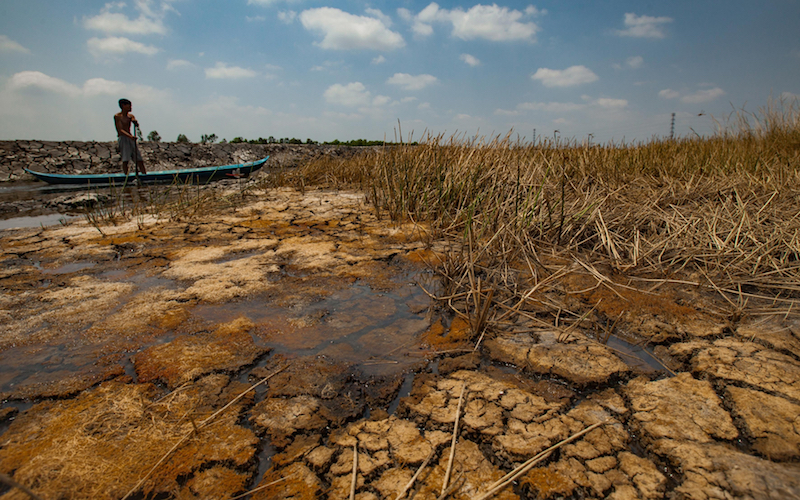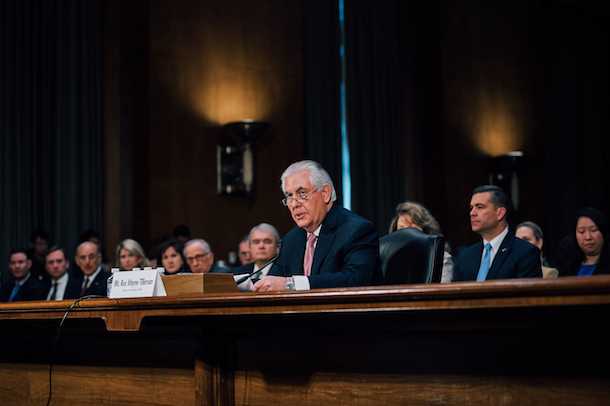
Mekong Offers U.S. a Non-Confrontational Opportunity to Reset Asia Pacific Policy
In the wake of President Donald Trump’s “America First” policy, including the cancellation of the Trans-Pacific Partnership, it’s not clear if Washington will consider any reset of an Asia Pacific policy, or that the inflammatory rhetoric of the new Secretary of State, Rex Tillerson on China might be softened to shore up U.S. credibility through a possible re-engagement in the Mekong.
The Mekong, a river of life, winds its way from the Tibetan plateau through mountains and jungles before spilling into rice paddies of the Lower Delta. There, 20 million Vietnamese watch the dramatic change in the flow of water and sediment levels threatening their fish stocks and aquaculture. Clearly, China’s upstream dams are contributing to the ecological threats in the delta.
In 2016, the agriculturally rich Mekong Delta experienced the worst drought in nearly a century resulting from the climate change effects in connection with Chinese-owned Mekong mainstream dams. Even though climate scientists and environmentalists have raised concerns and repeatedly warned about the probability of such a double disaster occurring again, or some clearer impacts posed by climate change and Chinese-owned dams separately, the local authorities and people eventually dealt with the disaster in passive and ineffective ways. As a result, the massive drought damaged approximately 620 square miles of rice production in the Mekong Delta, left 600,000 people facing drinking water shortages, and resulted in economic losses of over $220 million.
With mere months before the start of Vietnam’s lower Mekong dry season, local authorities and citizens seem unprepared to respond to the season’s inevitable tragic environmental impacts. Despite more than a probability of a link between drought and the upstream dams, there has been little reporting on the issue and community capacity building in the region. Unfortunately, there remains the systemic lack of awareness among local communities, especially those who are vulnerable, such as rice farmers and fishermen, and the slow and palliative responses posed by local authorities are inevitable.
In the Mekong Delta, water flow decline has become much worse over the past decade because of the dam-building along the Mekong. The breakneck speed of dam construction continues to challenge the living conditions of local people and to cause serious environmental changes. Instead of being transparent in its water diplomacy and dam constructions, China chose to undertake a campaign to counter the perception that its dams are hijacking the Mekong’s water as the river runs from the Tibetan Plateau to the South China Sea. At press conferences, China continues to make its case that the drought is a natural phenomenon. Apparently, China has good political reason to turn blame away from its dams. In an aggressive game of water diplomacy, China has gained enormous leverage over downstream countries by taking control of their primary water sources.
In a clash between a Chinese government trying to meet huge demands for hydropower for a growing population in energy-hungry urban centers in and outside its southwestern economic region, and the need to protect and preserve the Mekong’s ecological riches and fisheries, conservation and food security is clearly losing. Despite growing concerns from downstream countries and huge biodiversity and agricultural losses and attendant lessons learned from these historical droughts, Chinese-backed dam building is moving forward faster than the completion of any environmental impact assessments needed to provide the evidence of significant impacts.

With half a dozen upriver dams already built and many others are either underway or scheduled to start soon, the Mekong Delta’s future – one of the Southeast Asia’s most fertile ‘rice bowls’- appears to be critically challenged. According to the United Nations-sponsored Intergovernmental Panel on Climate Change, this lowland delta is among the world’s most vulnerable coastal regions in the world when it comes to the effects of climate change and sea-level rise. The record 2016 historical drought, coupled with decreased water flows downstream due to these mainstream dams, have exacerbated salinity intrusion further inland. It has also generated extreme stress on freshwater supplies and food security for millions of people, especially those who live in rural areas and closer to coastal areas.
It is clear that Chinese dams are a prime culprit, among other factors such as changing weather, saltwater intrusion, biodiversity depletion, rising sea levels and industrial pollution causing the dire threat to the Delta’s ecological balance. In fact, Chinese-owned dams not only prevent flood waters from reaching Vietnam’s lower Mekong Delta, but also hold back the flow of sediment that enriches the soil and provides food for freshwater animal species, many of which are endangered fishes such as Irrawaddy dolphins and Mekong giant catfish. However, Vietnam’s Mekong Delta is not the only region directly affected by these hydropower projects. In Cambodia, government officials and environmental NGOs have also sounded the alarm. They are deeply concerned that the mortal impact posed by the dams will ruin Cambodian fisheries which provide 80 percent of the country’s protein, further fueling risks to the national security issue to protect their food security.
As an intergovernmental organization, the Mekong River Commission (MRC) has failed to create among its member countries a legally-blinding mechanism to protect the shared interests over utilizing the Mekong’s water resource. Since 2014, many meetings and summits between MRC member states over Mekong mainstream dam construction have ended with no progress. Laos, the poorest member in MRC, has ignored concerns and remains determined to move forward with dam construction that threatens the environment and food security of other downstream members. While some kind of financial deal to compensate for the loss of revenue from its dams cannot be come by easily, Laos has made remarkable progress in building its two giant dams – the Xayaburi Dam in 2012 and the Don Sahong in late 2014. As one of four founders of MRC which was established in 1995 aimed at protecting its member states from negative impacts posed by China’s dam-building, and to promote sustainable management of water resources for the countries’ mutual benefit and well-being, such decision-making by Vientiane not only dismantles the existing incoherence among the organization, but further contributes to making a tragic turning point for Southeast Asia’s most important river; resulting in the slow death of regional fisheries and agriculture.
With Tillerson now at the helm of State Department, and wanting to broadly demonstrate to China that America is not politically impotent like the Mekong River Commission, now’s the ideal time to step up soft diplomacy to help China’s downstream neighbors, like Cambodia and Vietnam. The State Department’s Lower Mekong Initiative can be broadened through the following non-volatile actions:
Engage the US Geological Surveys, through its National Wetlands Center and expand the reach of the Delta Research and Global Observation Network (Dragon) to share more technical knowledge and tools with scientists at Can Tho in the Lower Delta.
Insure that the new US multimedia tool, “Forecast Mekong” is effectively in the hands of the delta’s ecologists.
Expand the Mississippi-Mekong River relationship to better develop regional capacity in river modeling tools.
Support the US Army Corps of Engineers efforts to provide assistance to the Mekong River Commission to increase regional cooperation on issues of shared water resources.
Fund the continuing efforts of USAID to improve clean water initiatives in the Mekong Basin.
While Washington recognizes that there’s a lack of any legal “code of conduct” and sanctions to deal with violations of the 1995 Mekong Agreement, the mere announcement of America’s renewed interest and presence in the delta through expanded USAID projects may gain the attention of other Mekong neighbors, especially, Cambodia, Laos, Myanmar and Vietnam to address China’s efforts to elude environmental “run-of-the river” practices.
Of even greater concern is that China has exported its state-led, growth-at-any-cost development model to the Mekong region in many ways. Laos and Cambodia are among other less developed countries that stand to benefit economically from Chinese-backed multibillion-dollar infrastructure development projects, especially high-speed railways and hydropower dams in the Mekong River. While waiting to see how much the Lao and Cambodian peoples would actually benefit from these Chinese-backed projects, substantial impacts posed by China’s construction of eight dams on the upper Mekong River in Yunnan province have shown these governments that Beijing can set downstream countries’ national interests aside to realize its own ambitious interests at all costs.
For now, the State Department’s subtle nod towards the Mekong Delta may provide a safe and strategic compass for Secretary Tillerson to offer a strong symbolic hand to China, unlikely to lead to any diplomatic or military showdowns with Beijing.


